Passion zellige: small tiles, maxi effect
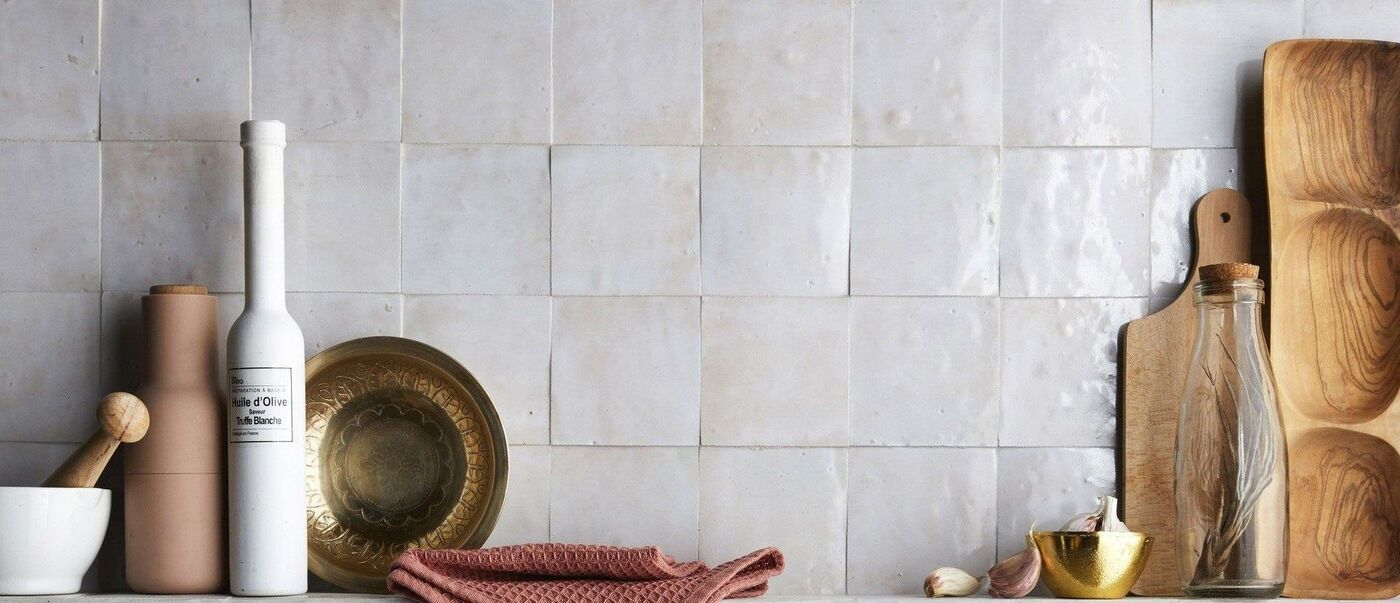

Small zellige tiles from Fez have made a name for themselves in our interiors, and are more fashionable than ever. Its natural, hand-crafted material is in line with the Craft trend we love so much. As for its enamel finish, which nuances the colors and reflects the light as in our dreams, it fulfills all our decorating inspirations. We tell you all about zellige.
Zellige means tile in Arabic, yet it has nothing to do with the smooth earthenware tiles we spontaneously think of. Inspired by Moroccan mosaics, zellige is a small tile measuring 10×10 cm and approximately 1 cm thick in its best-known format. It's made of terracotta and covered with a colored, even pearly enamel, which makes its finish so shiny. The more traditional version is also available with motifs.
A key feature (and part of the reason for its success) is the fact that, far from being industrialized, it is handcrafted to create unique tiles, not only in terms of color (even if worked in the same bath, the color can vary from one tile to the next), but also in terms of format: its surface is irregular, not really flat. The covered wall is thus subtly nuanced in its relief and tonality, for a guaranteed decorative effect.
Mostly available in turquoise, green and blue, terracotta or off-white in Oriental colors, zellige is so fashionable that it can also be found in orange, pink, yellow or even black.
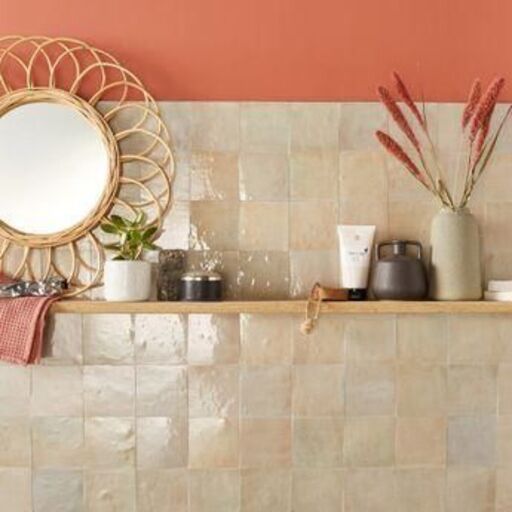
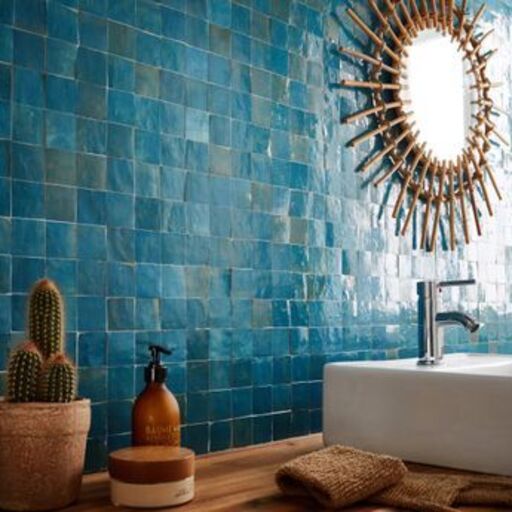
Zellige comes straight from Fez, and only from Fez! The quality of their clay is unique and specific, and the process of making it in ancient kilns, as well as beveling the edges by hand, has not aged since the 12th century, if we're being precise. Still used for traditional creations in oriental countries, it is very often found in palaces, hammams, restaurants, homes - in short, everywhere.
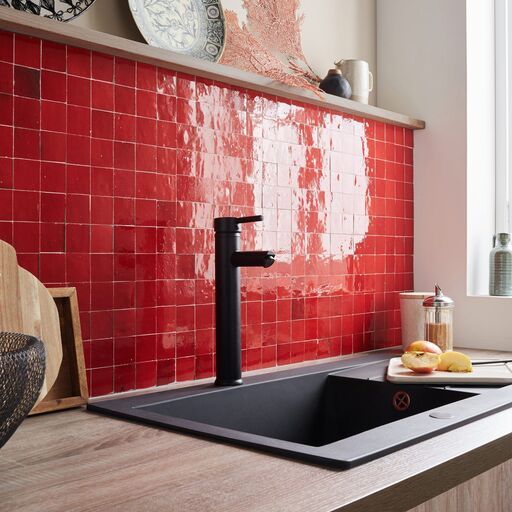
In France, we've always seen it here and there, in slightly rustic or bohemian kitchens, or in more daring bathrooms, but it's only in the last few seasons, when a handful of well-known architects rediscovered its graphic and highly decorative potential, that the general public has discovered, appreciated and embraced it! It has to be said that the current "artisanal" trend has a lot to do with it. Our desire for something different, for values, for craftsmanship, for authenticity, turns us to materials of this type, handmade, imperfect and unique, allowing us to create a personal decor that won't resemble that of the next-door neighbor. At last, it's back, because it's appreciated for what it's worth: zellige is beautiful! Very beautiful. Both chic and ethnic.
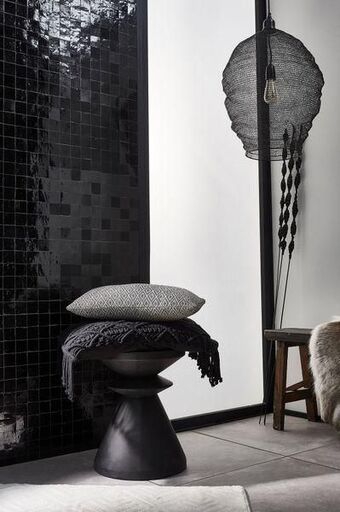
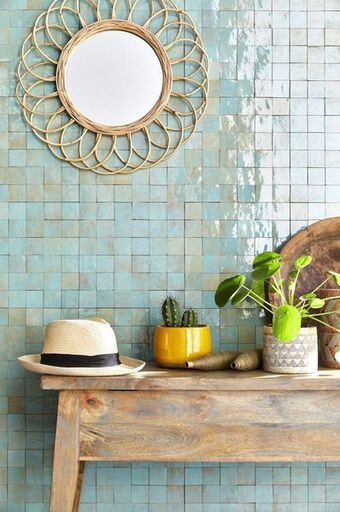
Zellige allows you to indulge your creativity and play with the nuances and light reflected by these small squares of gold. However, at Decoclico we prefer to use them in touches, rather than as a total look. Often placed on kitchen or bathroom walls (very rarely on the floor, because of its roughness and fragile enamel), imagine them as a credenza or in a niche, on a wall or as a base, but also around the bathtub/shower or the mirrors so you can admire them every day!
If you're feeling handy, you can lay them on your own with a little grouting (which, unlike traditional tiles, shouldn't be visible), but if you're not so good at it, it's such a beautiful material that it would be a shame to miss out: call in a pro instead.
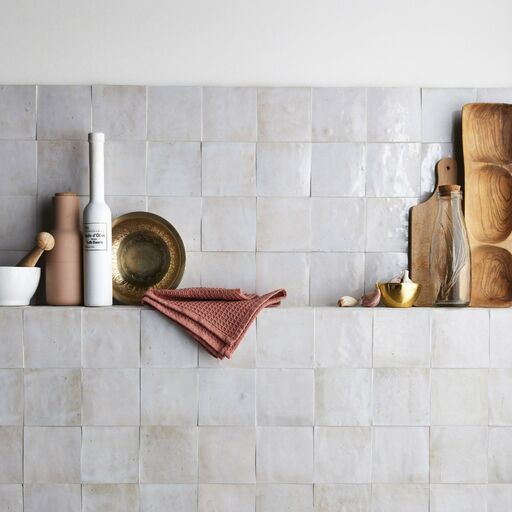
The other side of the coin for beautiful zellige is its price, which explains why it's still not widely used. Of course, a few years ago it was only available from high-end retailers, so we can appreciate that it's now much easier to find (as at Leroy Merlin from which all the photos in this article are taken), but its price remains high, justified by the fact that it's handcrafted: you can expect to pay from around 100 euros per m2.
Author : Hortense Leluc Photos : Leroy Merlin